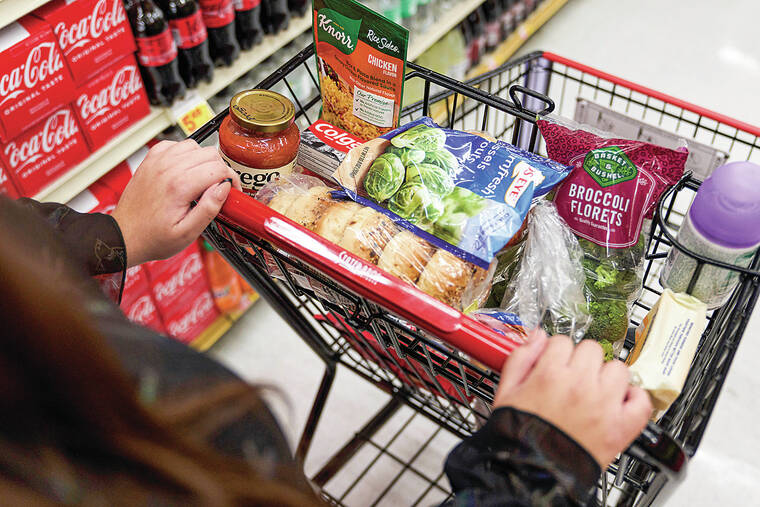Food insecurity rises in Hawaii amid increasing costs
A new study from nonprofit Hunger Free America found that 137,000 people across the state lived in food-insecure households between 2020 and 2022 — including 14.7% of children, 8.3% of employed adults and 4.4% of older residents.
The study aligns with trends seen by the Hawaii Foodbank, one of the state’s seven community-based Supplemental Nutrition Assistance Program outreach providers.
ADVERTISING
The nonprofit served an average of 140,000 people per month for the past two months, compared with 120,000 people each month earlier this year.
Hunger Free America’s study — which found that hunger is a serious problem across the country — attributes the increase in food insecurity to many federal benefit increases, such as the Child Tax Credit expansion, ending as other living expenses rise.
“Effective federal public policies over the previous few years were spectacularly successful in stemming U.S hunger, but as many of those policies have been reversed, hunger has again soared,” Hunger Free America CEO Joel Berg said in a news release.
“Just as no one should be surprised if drought increases when water is taken away, no one should be shocked that when the government takes away food, as well as money to buy food, hunger rises,” Berg added.
Hawaii Foodbank CEO and President Amy Marvin said that the ending of these federal programs, coupled with higher food prices and other factors, potentially could explain the persistence of food insecurity in the state.
The need for hunger relief in Hawaii peaked during the coronavirus pandemic, when the Hawaii Foodbank was serving approximately 175,000 people per month.
Hunger Free America’s study also gathered data on nonparticipation rates in federally funded hunger relief programs.
According to the study, 27% of those eligible for SNAP were not receiving their benefits in 2018, and 44% of those eligible for the Special Supplemental Nutrition Program for Women, Infants and Children were not receiving their benefits in 2021.
Additionally, 70% of children who received school lunch in the 2021-2022 school year did not receive school breakfast.
Moves toward combating food insecurity also were made in this year’s legislative session, including a bill providing universal lunches for all public school students and one matching funding for food programs like SNAP and DA BUX, a program that provides SNAP recipients with a 50% discount on Hawaii-grown produce.


